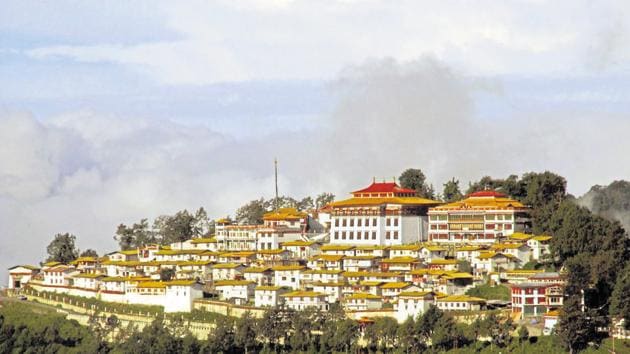China renaming places in Arunachal is an old ploy to delegitimise adversaries
China has long mastered the art of “lawfare” or the system through which legal claims are put forward to delegitimise adversaries. Renaming places is not something new. So the Chinese call the Paracel Islands and Spratly Islands in the South China Sea as the Xisha and Nansha islands or the Senkaku islands which they dispute with Japan as the Diaoyu islands.
True to form, the Chinese have pushed up their claim over Arunachal Pradesh to another level. The English daily Global Times said in a news item today that “China’s Ministry of Civil Affairs announced on April 14 that it had standardised in Chinese characters, Tibetan and Roman alphabet, the names of six places in ‘South Tibet’, which India calls ‘Arunachal Pradesh’ in accordance with the regulations of the central government.

So, Bum La, the pass that marks the Line of Actual Control (LAC) north of Tawang has become Bümo La and Namka Chu, through which the current LAC runs and where the fighting first began in October 1962, has become Namkapub Ri and Menchuka, a small town in West Siang district, has become Mainquka.
China has long mastered the art of “lawfare” or the system through which legal claims are put forward to delegitimise adversaries. Renaming places is not something new. So the Chinese call the Paracel Islands and Spratly Islands in the South China Sea as the Xisha and Nansha islands or the Senkaku islands which they dispute with Japan as the Diaoyu islands. So Aksai Chin which India claims as being part of Jammu & Kashmir is occupied by China and is said to be the southwestern part of the Hotan Prefecture of Xinjiang.
According to the daily, the aim is to “reaffirm the country’s territorial sovereignty to the disputed region”. The paper cited a Chinese specialist Xiong Kunxin to say that the renaming and standardisation were part of “China’s growing understanding and recognition of geography in South Tibet.”
India’s claim on Arunachal Pradesh rests on the Simla Convention of 1914 which it arrived at with the Tibetan authorities which marked the border through what was known as the McMahon Line. The great monastery of Tawang thus became a part of India, though it was administered by Tibetan monks till 1951 when an Indian patrol team led by Major R. Khating sent them away. China says that its representative had not agreed to the Simla Convention, though the record says that he initialled it. Further in ensuring years, the Chinese authorities did not raise any issue with regard to the McMahon Line.
Even though China claimed a boundary on the foothills of the Assam plains from the outset, it did not press its claims. In 1962, following the defeat of the Indian Army, China occupied all of Arunachal Pradesh, but voluntarily withdrew thereafter.
Earlier in 1960, Premier Zhou Enlai offered to trade Chinese claims in Arunachal with India’s claims in Aksai Chin which China was occupying. This offer of a swap was repeated again by Deng Xiaoping in the early 1980s. However, since the mid-1980s, the Chinese have been saying that India should concede Tawang to them. And now, following the most recent visit of the Dalai Lama, which China warned would spoil Sino-Indian relations, Beijing has taken this additional step.
However, in 2005, in signing the agreement on the Political Parameters and Guiding Principle for the Settlement of the India-China Boundary Question, China accepted under its Article VII that “In reaching the boundary settlement, the two sides will safeguard due interests of their settled populations in border areas.” Indians assumed that the Chinese were willing to again forgo their claim on Tawang, but a year later China disavowed this as well.
Last month, Dai Bingguo who was Beijing’s top negotiator on the border dispute with his Indian counterparts between 2003 and 2013, said in an interview with the China-Indian Dialogue magazine that “The disputed territory in the eastern sector of the China-India boundary, including Tawang, is inalienable from China’s Tibet in terms of cultural background and administrative jurisdiction.” Indeed, he had the chutzpah to suggest that India was blocking China’s “reasonable requests” in not offering Tawang up as part of a border settlement. Indian negotiators have repeatedly told the Chinese that bringing up Tawang is a deal breaker.
Now, it is not just Tawang, clearly the Chinese are hardening their claim on the entire state of Arunachal Pradesh. And the prospects of a border settlement look remote. But this is not just something that affects India. Across their periphery, whether in the Senkaku/Diayou islands, or the South China Sea, China’s position on its borders has become more assertive and inflexible.
Manoj Joshi is distinguished fellow, Observer Research Foundation
The views expressed are personal



